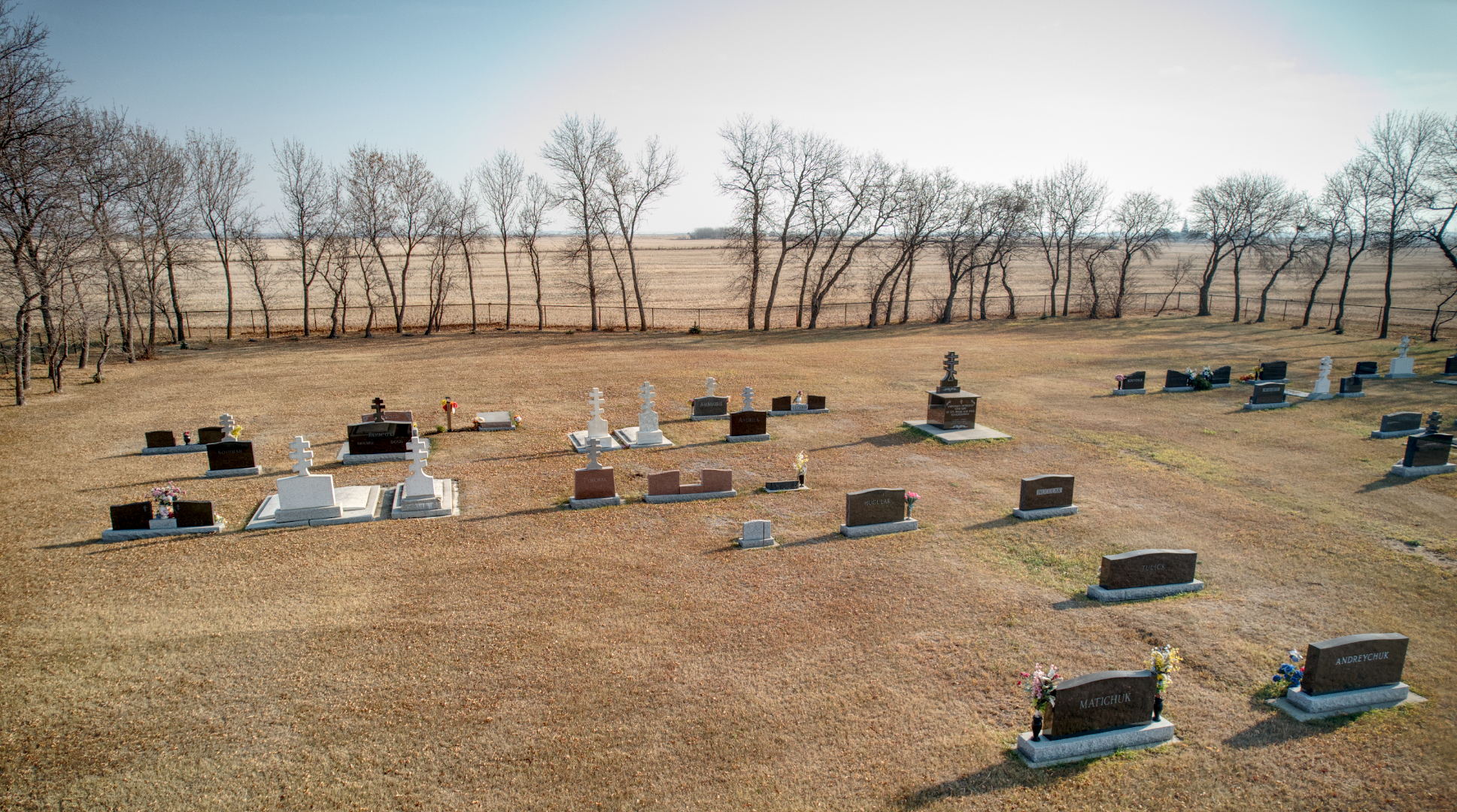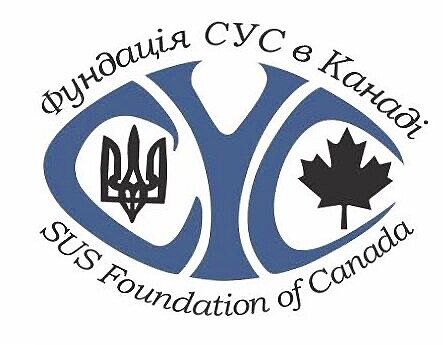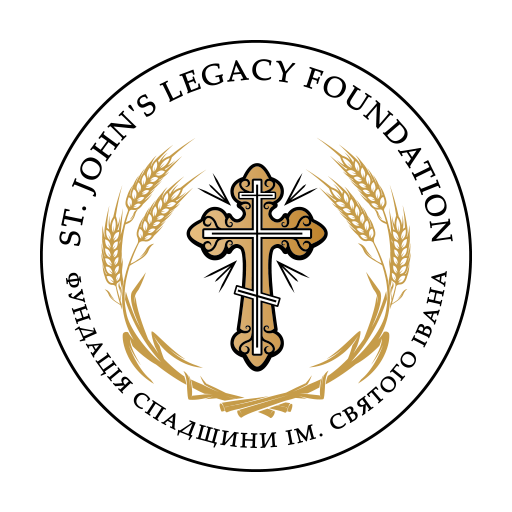Congregational life was inaugurated in Andrew itself by a small group of activists in the summer of 1936, at which time four acres of land were purchased in the village for the site of a future sanctuary. An official organizational meeting was then held at the home of William and Mrs. Melenka on November 23, of the same year (the hosts being among the six persons in attendance at the gathering), a formal certificate of admission subsequently being issued by the Consistory of the Ukrainian Greek Orthodox Church of Canada on July 28, 1941. Reverend I. Hykawy, the resident priest at St. John of Suchava, celebrated the first liturgy in Andrew while the congregation was getting organized. Archbishop Ioan Theodorovich also visited the community during one of his periodic tours of east central Alberta. The building of the sanctuary began on July 4, 1939, with volunteers working under the supervision of Ivan (John) Mnoholitny, a farmer from the nearby Kahwin district who oversaw the construction of numerous Ukrainian churches locally and in other parts of rural western Canada.
Judging from a photograph taken of the congregation standing outside the church after it was first used for a service by Rev. Stephen Symchych in September 1940, it took several years to properly finish the structure. The completed sanctuary boasted a large central dome topped by a cupola, set amid four additional cupolas, three of which adorn the facade. The basement of the church was gradually developed as a multipurpose hall that could accommodate meetings, dinners, and a wide variety of parish functions. Similarly, an iron bell-stand was later erected adjacent to the entrance to the church, the bell having been donated by members of the Zawale congregation (most likely in the 1980s) after their own sanctuary had been abandoned.
In 1939, when the congregation was mobilized behind the construction of the church, it was comprised of twenty-eight members. However, within a year, the initial wave of enthusiasm had apparently waned to the point where only half the original membership was still active. From 1941 to 1946 the congregation was relatively stable, fluctuating between twelve to fourteen members and their families.
In 1948, Saints Peter and Paul church hosted thirteen services, and reported having sixteen paid members. A letter to the Consistory the following year announced that over sixty children were attending Sunday school, indicating parish life was extremely vibrant in the immediate postwar period. By 1951, membership in the church had grown to twenty-four families, and steady increases in the congregation's size were registered for the next four years. This expansion was probably attributable to a combination of factors, including the impact of the postwar baby boom and the rising importance of rural towns with the gradual decline of the farming population living in the surrounding countryside.
The church was formally consecrated by Metropolitan Ilarion during a visitation made on June 12, 1952. Around this time, the members of Saints Peter and Paul began discussing the possibility of installing an iconostasis, an issue that apparently divided the congregation. A vote taken at a meeting held in 1953 revealed that while fourteen members were keen to press on with the project, a dozen were opposed due to financial concerns. The will of the majority eventually prevailed, and it was reported in a 1954 article in Ridna nyva that work was about to proceed on the construction of an icon screen, the exterior of the church having recently been stuccoed. These and other positive developments signaled the maturation of parish life and were made possible by the increasing prosperity of the Andrew Orthodox community.
In 1952 the congregation consisted of thirty families, with another forty families being identified as sympathizers (the total number of the latter was said to be 210 individuals in the annual report to the Consistory for 1954). In the early 1950s, the church hosted an average of thirteen services over the course of the year, a figure that has remained fairly constant until the present day. The congregation reached a peak in size during the mid-1950s, benefiting in part from an influx of retirees from outlying farms, and partially from a concomitant decline in activity at St. Michael's Church in Zawale. As services became increasingly infrequent at the latter in the fifties and sixties, the dwindling Zawale membership joined Saints Peter and Paul Church, contributing to its vitality and viability.
An especially proud moment in the history of the congregation was the July 1972 ordination of Rev. Henry Lakusta in the church, a son of a former member, John Lakusta. A second son, Victor, had earlier been ordained in Winnipeg, and is currently serving at St. Andrew's Sobor in Edmonton.
Over the years, some of the land originally purchased for the church was sold for residential development, so that the congregational property today consists of less than two acres. The roof of the Saints Peter and Paul has been re-shingled on two occasions, and the structure received a major facelift in the 1970s. Its original windows have been replaced, and its cupolas and dome have been repainted. The congregation is a co-owner of a manse in Willingdon, along with the eight other area churches comprising the Willingdon parish.
Go HERE for more information and history of this parish.
The Cemetery
A one acre parcel of land was acquired for a church cemetery in 1925 at NW 28-56-16 W4 on the southern approaches to the town, on the east side of Secondary Highway 855. The earliest burial was that of William Lesick (d. 31 December 1952), the founding president of the church. Several local dignitaries such as the first mayor of Andrew (Tom Matichuk) and the first Justice of the Peace (Gregory Moisey) are interred in the church graveyard.

Play Memory Eternal Chant
GPS Co-ordinates: 53.881432, -112.335769
Cemetery Co-ordinates: 53.869420, -112.331297
Affiliation: Ukrainian Orthodox Church of Canada



 Financial support generously provided by:
Financial support generously provided by: 